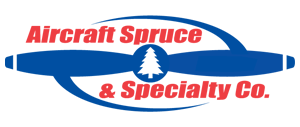UMA 3-1/8 TSO Electric Tachometer 0-3500 RPM Green 500-2700 Redline 2700
MFR Model# T19-801-112
- JUMP TO
- Overview
- Accessories
- Reviews
- Q&A
- View in Catalog
Overview
|
Owners of Lycoming and Continental powered airplanes now have an electronic, analog alternative to the old cable driven tachometer. The new UMA tach is certified to FAA TSO C49b standards for fixed wing aircraft. The system uses a tach sender mounted on the engine in place of the mechanical cable and is connected to the indicator with a single, 3-conductor cable.
The 3 1/8” indicator utilizes a high torque pivot and jewel movement. The hour meter can be factory set to start at any desired RPM point. This unit gives the pilot the analog display that is easiest to scan and provides electronic accuracy and ease of installation. Comes with T1A3-4 Sending Unit and 1D6 Harness Please Note: For markings other than 0-3500 2700 - See 10-01221. |
WARNING: Cancer and Reproductive Harm - www.P65Warnings.ca.gov. |
Reviews
I purchased this tach approximately June 24. The tach did not work immediately after installation. I still do not have a working tach. I still cannot fly my airplane. I never felt like anyone wanted to resolve this issue. I felt Aircraft Spruce should hav e immediately sent a replacement.
UMA 3-1/8 TSO Electric Tachometer 0-3500 RPM Green 500-2700 Redline 2700
Nice looking and easy to install. It requires aircraft power to work, so do not try to use this on your J-3 or any aircraft with no electric system. I am surprised the FAA allowed this to be TSOd as most tachs should be able to work when there is an electric power failure. Ultimately this should have a tach generator power source for safety.
UMA 3-1/8 TSO Electric Tachometer 0-3500 RPM Green 500-2700 Redline 2700
Q&A
Please note, Aircraft Spruce ®'s personnel are not certified aircraft mechanics and can only provide general support and ideas, which should not be relied upon or implemented in lieu of consulting an A&P or other qualified technician. Aircraft Spruce ® assumes no responsibility or liability for any issue or problem which may arise from any repair, modification or other work done from this knowledge base. Any product eligibility information provided here is based on general application guides and we recommend always referring to your specific aircraft parts manual, the parts manufacturer or consulting with a qualified mechanic.








 FREE Shipping
FREE Shipping














